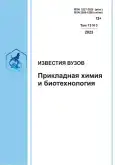Polyetherimides (PEIs) are a class of structural polymers with the most successful combination of such essential properties for practical applications as high heat resistance, thermal stability, ultimate tensile strength, elastic modulus, good dielectric properties, and high chemical and radiation resistance. However, along with these advantages, PEIs are compounds with high softening and melting points, which complicates their processing into products. In recent decades, specialists have found numerous ways to decrease the glass transition temperature by increasing the flexibility of the main polymer chain. To this end, functional groups with a higher degree of rotation, such as isopropylidene, hexafluoroisopropylidene, 1,2-dichloroethylene, and other substituents, are introduced into the main polymer chain. Polyetherimide, whose precursors are 3(4)-nitrophthalic anhydride, m-phenylenediamine, and bisphenol A, was first produced by General Electric under the Ultem brand name and is currently believed to be one of the best-known engineering thermoplastics. In particular, two synthetic methods can be used to obtain such polyetherimides. The first technique uses a cyclization of poly(amidocarboxylic acid), which is obtained by the polycondensation of dianhydride of 2,2-bis-[4-(3,4-dicarboxyphenoxy)phenyl]propane and m-phenylenediamine. The second technique uses the polynitro substitution of 1,3-bis[N-(3-nitrophthalimido)]benzene and the dynatrium salt of bisphenol A. To date, the Russian scientific literature lacks reviews with detailed descriptions of known methods for the preparation of Ultem series polyetherimides. The present review generalizes and systematizes the available literature data regarding the synthesis of the Ultem series PEIs. In addition, this study describes preparation methods of soluble thermoplastic polyetherimides of this series, available synthesis methods of initial monomers with reaction yields, and physical characteristics of such polymers.
 325-332
325-332


 333-339
333-339


 340-349
340-349


 350-358
350-358


 359-369
359-369


 370-381
370-381


 382-391
382-391


 392-401
392-401


 402-408
402-408


 409-415
409-415


 416-424
416-424


 425-433
425-433


 434-441
434-441


 442-453
442-453


 454-460
454-460














